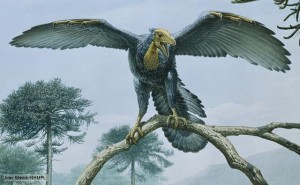One of the most important things palaeontologists and taxonomists do is the description of new species or fossils. Focussing on dinosaurs, because they’re the ones I know the best, there is a whole host of descriptive anatomy to get your head around. It’s not just the names of the bones; it’s also the names of the parts and structures within bones, including muscle scars and hypothesised muscles that attached to them. As well as this, you have to describe the relative position and spatial relationships between these elements to build a 3-dimensional image of a fossil based on descriptive terminology. This final part comes with a host of orientation related terminology, and can be incredibly confusing to decipher. At request from Sam Barnett (@Palaeosam), here’s an attempt to break it down, so that whenever you’re reading a description of a new species, you’ll hopefully be able to figure out some of the position-related jargon scientists have used!
Note, that while these can refer also to specific parts of the body, they can be used as relative terms too (e.g., the scutes are positioned dorsally, and the scutes are dorsal to the vertebral column).

